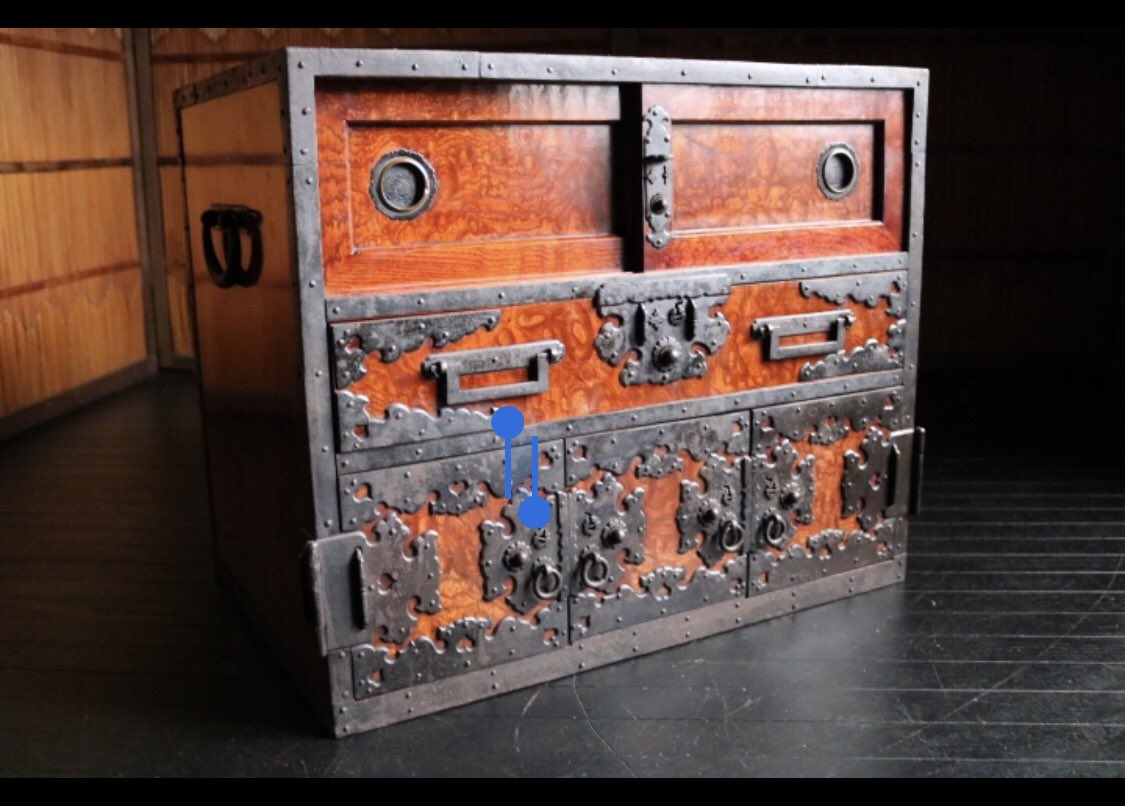Fascinating thread about paulownia which just popped into my timeline.
I offer a little extra detail... https://twitter.com/wrathofgnon/status/1262028361544552448">https://twitter.com/wrathofgn...
I offer a little extra detail... https://twitter.com/wrathofgnon/status/1262028361544552448">https://twitter.com/wrathofgn...
The picture of tansu 箪笥 there shows kiri/paulownia in its ‘natural’ state. The ones with large horizontal drawers are end-Meiji to early Showa Period from north of Tokyo (the format is most like those tansu from Yamagata and Fukushima) and the vertical ones with little ironwork
are mostly from the Tokyo/Kanto area. It is to note that tansu exist in many areas of Japan and each region has specialty types/formats and woods. Most well-made commercial tansu from the two regions above - Fukushima and Yamagata - were NOT made of paulownia. They had cedar
Cases (side, top, back, bottom, drawer structure) and drawer fronts made from a hardwood such as zelkova 欅, chestnut 栗, or horse chestnut 栃. The tansu would be stained/treated and lacquered or just lacquered using many layers of ki-urushi (“raw” lacquer).
The further north
The further north
Or west one goes from Tokyo, the less likely a tansu will be made with paulownia. The exceptions of tansu from Tsuruoka/Shonan, from Akita prefecture, and some ‘fine’ smaller tansu meant to store books, and so-called ‘sword chests’.
For clothing chests, shop chests, bookkeeper
For clothing chests, shop chests, bookkeeper
chests, etc, from northern areas, keyaki/zelkova was the high end. And in places like Niigata, Yamagata, Sendai and parts north, Toyama, Fukui, etc, the more was made of keyaki, the more it cost. The ‘kiri exception’ is that for the highest-end tansu, the bottom and sides of
drawers might be made of paulownia because planed paulownia was both light and VERY smooth. Also, unlike almost every other wood out there, it does not warp torsionally when humidity changes.
Sadly, the ‘plant a paulownia tree when a daughter is born’ really works only for the
Sadly, the ‘plant a paulownia tree when a daughter is born’ really works only for the
non-Tokyo areas of the Kanto plain. Tokyoites had no space and in areas where people made chests with zelkova front panels, it would take far more than two decades to grow a tree large enough to use the wood for a tansu.
It should be noted that the ironwork on a tansu is decorative. The handles, of course, serve a purpose but the rest is mostly decorative, starting with the large lock plate.
The exception, of course, is on sea chests, which were chests for documents and small sundries carried
The exception, of course, is on sea chests, which were chests for documents and small sundries carried

 Read on Twitter
Read on Twitter



